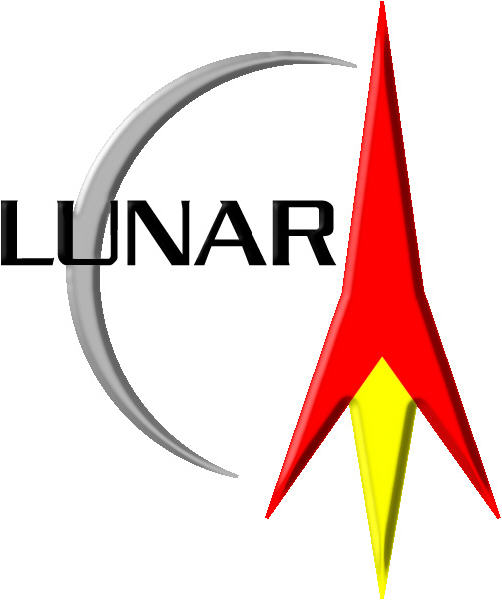 LUNAR’clips
2004
Volume 11, Number 5
LUNAR’clips
2004
Volume 11, Number 5
 LUNAR’clips
2004
Volume 11, Number 5
LUNAR’clips
2004
Volume 11, Number 5
Livermore Unit of the National Association of Rocketry September/October 2004
Copyright © 2004 by LUNAR, All rights reserved.
The Megalodon is an extinct Shark about 60 feet long from the Cenozoic Era, and also the name of a rocket designed and built by my son, Christopher Raimondi, NAR #82678, LUNAR 1222.
Christopher wanted to build a rocket of his own design, so with a little help from Dad, we designed the rocket in Rocksim first and ran a few flight simulations. The flight simulations show an over stable rocket design.
The rocket was designed for 18mm motors, with a parachute recovery. Christopher selected the different parts, and designed the fin pattern after the dorsal fin of a Great White Shark. With the plans done and printed out, I helped Christopher carefully cut out the fins using an exacto knife. The construction of the rocket is straight forward, with the centering rings being the hardest part. Once Christopher had everything sanded down, we glued on the three fins. Christopher did the gluing and I made sure the fins were straight on the body tube. I did the motor mount and Christopher glued it in. The gooiest part of building the rocket was installing the shock cord mount.
The rocket was painted with teal fins and dark blue body tube and nose cone. I helped by creating the jaws and eyes in PowerPoint and printing them out on Label paper. This actually worked out great!
The rocket is over stable so we decided to fly it on a C6-5 on the first flight. The simulation run for this motor shows a maximum altitude of 842 feet in light winds. After a thorough preflight check by Christopher and myself, we checked the rocket in for a safety inspection. Not only was this the first flight of this rocket, we were given pad 1 for the first launch of the day. Christopher was allowed to launch his own rocket. The rocket flew straight of the pad with no spin, with a parachute deployment just after apogee. This was an awesome first flight.
Parts list:
Nose cone Estes - Estes - PNC-55AC, Material: Polystyrene PS
Body tube Estes - EST 3087 - BT-55, Material: Paper
Body tube Estes - EST 3085 - BT-20, Material: Paper (MOTOR MOUNT)
Engine block - Custom, Material: Paper
Centering Ring - Custom, Material: Balsa
Centering ringOD: 1.283 In., ID: 0.736 In., Len: 0.125 In.
Location: 16.125 In. From the front of Body tube
Centering Ring - Custom, Material: Balsa
Centering ringOD: 1.283 In., ID: 0.736 In., Len: 0.125 In.
Location: 17.500 In. From the front of Body tube
Parachute Estes - 12 in. plastic
Shock cord - Custom, Material: 1/4 In. flat elastic 24" in length
Fin Pattern
Rocksim: Simulation Runs:

Rocksim Overview:
Statistics:
All content is the responsibility of LUNAR.
If you have comments or suggestions regarding these web pages,
please contact the 
Copyright © 1992 - 2025 LUNAR